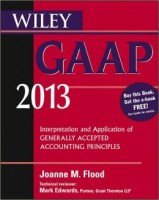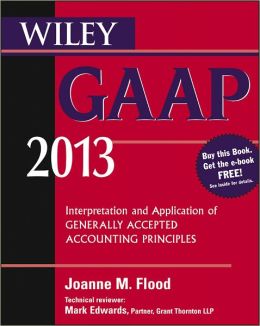 Author: Joanne M. Flood. Technical Reviewer: Mark Edwards, Partner, Grant Thornton, LLP
Author: Joanne M. Flood. Technical Reviewer: Mark Edwards, Partner, Grant Thornton, LLP
Publisher: John Wiley & Sons – 1321 pages
Book Review by: Sonu Chandiram
This book of 33 chapters has an extensive coverage of topics, from Researching GAAP Matters (chapter 1, pages 1-26, to read what the GAAP is, its origin, the body that governs it, its scope of authority, etc.) to Revenue Recognition (chapter 12, pages 359-433, on which are itemized nine different types of revenue) to Income Taxes (chapter 24, pages 809-873, with topics ranging from the evolution of income taxes to an income tax provision applicable to interim period non-operating items, which is probably a concern of only a teeny number of companies).
Much comment has been made about the complexity of the tax system in the United States, both for individuals and for companies. It has been said that if you give your personal accounts to a thousand different accountants to do your income tax returns (Form 1040, associated Schedules and other forms) each one will come up with a different result, ranging from a large tax check you have to send out, to a large tax refund that you can sit back, relax, and wait for.
One fact that is little known is that the instructions to correctly fill out the two-page Form 1040, are 214 pages long. And when you’re reading and trying to understand those instructions (as I tried to do recently) you are constantly being referred to another section of the instructions or to a particular Schedule or Form.
There isn’t probably a Schedule for every letter of the alphabet, but I can assure you (after checking on Google) that almost every letter of the alphabet is covered. In addition, there are numerous numbered forms that one needs to fill out if he-she has a certain type of income, or qualifies for a particular deduction or tax credit, to lower the amount of taxes due, or get a bigger refund of taxes withheld.
By now, you have probably figured out I am not an accountant. If you are not one either, you probably would like to have a non-accountant’s review of, or at least a few comments on this book that is 1,321 pages long – the Wiley GAAP 2013. That is what I am going to do – give you a layman’s comments on this huge accounting tome.
First of all, I would like to inform you that while most books have a table of contents with parts and chapters, this is the only book I have come across so far, which has a table of contents within each chapter!
What I am going to do is to at least give you an overview of the contents of this book, the latest (2013) edition of GAAP rules. By now you may already know that if there is one thing that does not remain the same, it is the United States’ tax rules and regulations. That alone is reason enough to purchase this book if you’re an accountant.
So these are the 33 chapters in this book:
- Researching GAAP Matters
- Statement of Financial Position
- Statements of Income and Comprehensive Income
- Cash Flows
- Accounting Policies, Changes, and Restatements
- Fair Value
- Cash, Receivables and Prepaid Expenses
- Transfers and Servicing of Financial Assets
- Investments – Debt and Equity
- Derivatives and Hedging
- Inventory
- Revenue Recognition – Evolving Principles and Specialized Applications
- Intangibles – Goodwill and Other
- Property, Plant and Equipment
- Investments – Equity Method and Joint Ventures
- Investments – Other
- Business Combinations and Consolidated Financial Statement
- Collaborative Arrangements
- Current Liabilities and Contingencies
- Long-Term Liabilities
- Leases
- Research and Development
- Non-monetary Transactions
- Income Taxes
- Compensation – Retirement Benefits
- Compensation – Stock Compensation
- Stockholder’s Equity
- Earnings Per Share
- Interim Reporting
- Segment Reporting
- Foreign Currency
- Personal Financial Statements
- Specialized Industry GAAP
This book basically integrates the accounting principles promulgated by the Financial Accounting Standards Board (FASB). That organization recently undertook a codification project recently whose goal was to replace all individual standards, requirements and interpretations with a unified, codified set of accounting standards. That project has been completed and this book presents that integrated set of requirements.







